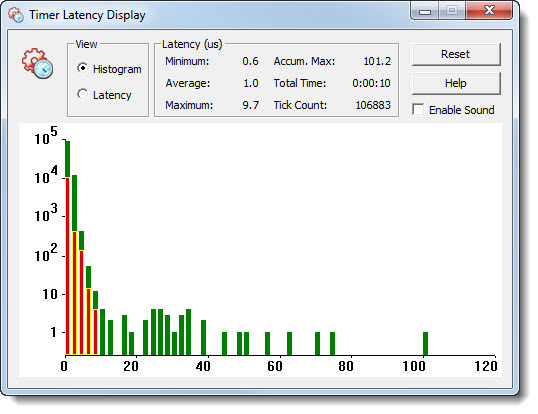
|
|
The Timer Latency Display tool consists of:
These two tasks communicate through shared memory.
NOTE: Source code for the Timer Latency Display Tool is included in the samples directory.
The RTSS task is similar to SRTM. The main execution thread creates an RTX timer, and sets it to expire periodically at the fastest available timer rate. The thread then enters a loop, testing a terminate request flag in shared memory, and sleeping between tests.
The timer function, which is called by RTSS each time the timer expires, reads the RTSS system clock, and computes the difference between the time observed, and the requested scheduled time. A histogram of this difference is compiled in shared memory. The RTSS task also accumulates shortest and longest observed latencies.
To run the Timer Latency Display tool:
NOTE: If you installed RTX to a location other than the default, substitute that path for C:\Program Files\IntervalZero\RTX.

| Option | Description |
|---|---|
|
Enable Sound |
The timer function toggles the output state of the system speaker port each time it is called. Since the timer function is called periodically, this results in a tone with a period equal to one half of the timer setting value. The system timer is set to 1 ms in the demo, resulting in a 500 Hz tone. |
|
Histogram |
View the data as an accumulated histogram. |
|
Latency |
View a time sequence of minimum, maximum, and average values observed in a series of 1-second intervals. |
|
Reset |
Reset accumulated statistics. |
|
Help |
View Help information on the Timer Latency Display tool. |
RTSSkill process_number
Where process_number is the ID of the process you want to terminate.